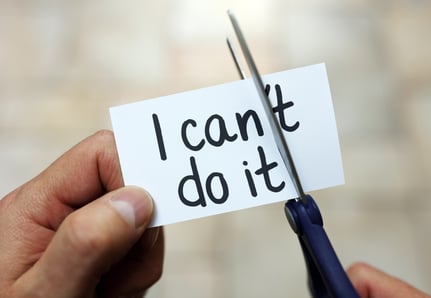.jpg?width=365&height=243&name=GettyImages-1778515577%20(1).jpg) As the festive season draws near, the anticipation of joy, celebration, and connection fills the air. Yet, for many of us committed to maintaining a healthy lifestyle, the holidays can also bring a sense of unease. The abundance of indulgent feasts, tempting treats, and busy schedules can pose challenges to our well-established routines.
As the festive season draws near, the anticipation of joy, celebration, and connection fills the air. Yet, for many of us committed to maintaining a healthy lifestyle, the holidays can also bring a sense of unease. The abundance of indulgent feasts, tempting treats, and busy schedules can pose challenges to our well-established routines.
But fear not! Setting healthy goals can be the compass that leads us through the festivities with balance, mindfulness, and a genuine sense of well-being.
What are goals and why should we set them?
Goals help us envision what our future will look like, it’s an intentional plan or activity we set out to achieve. We can use our goals to decide where our priorities lie. Goal setting provides focus and increases motivation. It is also important to limit the number of goals we have at one time, so we do not get overwhelmed. If this is something you are struggling with, it can be helpful to set smaller or short-term goals leading up to a larger or long-term goal.
Adjust behaviors to meet your goals.
For every goal you set, you will need to change your behavior to achieve the goal. It may help to think about the consequences of not changing the behavior vs. changing the behavior to keep motivation to continue working towards the goal at hand.
SMART goals and getting started.
People are more likely to achieve goals that meet the SMART criteria: specific, measurable, attainable, relevant, and time bound. We can use this information to get started setting our next goal. Start with writing the goal and what makes this goal specific, measurable, attainable, relevant, and time bound. Once you have all these answers, you can put it all together and begin working towards achieving this new goal!
Transform this holiday season into a time of self-discovery, growth, and joy. Are you ready to set sail on a path that honors your well-being? Let's embark on this adventure together and emerge from the holidays not just unscathed, but stronger and more connected to our health goals than ever before.
Share your healthy focus this holiday season in the comments!

.jpg?width=300&name=GettyImages-816941230%20(1).jpg) A member recently asked me how they can stay active while they are traveling or otherwise unable to make it to the gym. Here I’ll discuss several different topics to address the issue, taking into consideration space, time, equipment, and the individual’s goals. Our members’ ages are between 67 and 100, so the goals will vary depending on functional ability.
A member recently asked me how they can stay active while they are traveling or otherwise unable to make it to the gym. Here I’ll discuss several different topics to address the issue, taking into consideration space, time, equipment, and the individual’s goals. Our members’ ages are between 67 and 100, so the goals will vary depending on functional ability.
 The benefits of providing an onsite corporate fitness center at the workplace are far-reaching and they may or may not have anything to do with reducing health care costs. For leadership, it’s easy to focus on this tangible measurement and lose sight of other reasons to support employees in their health and fitness goals.
The benefits of providing an onsite corporate fitness center at the workplace are far-reaching and they may or may not have anything to do with reducing health care costs. For leadership, it’s easy to focus on this tangible measurement and lose sight of other reasons to support employees in their health and fitness goals. The second you tell yourself you can’t do something (without even trying), you are not even giving yourself a chance. It blocks you mentally from wanting to do something out of your comfort zone. When you have a negative thought of “I can’t” or “I won’t,” you aren’t even giving yourself the option to succeed at wellness or anything else.
The second you tell yourself you can’t do something (without even trying), you are not even giving yourself a chance. It blocks you mentally from wanting to do something out of your comfort zone. When you have a negative thought of “I can’t” or “I won’t,” you aren’t even giving yourself the option to succeed at wellness or anything else. 
 Olympic athletes are viewed as superheroes and celebrities; strong, brave individuals at the peak of their career. The words unrealistic or unattainable may have just come into your thoughts; mine too. After taking a step back and thinking about these superstars, there are many lessons we can learn from them. Years and years of preparation go into becoming an Olympic athlete and it is a full time job. What can we learn from these elite athletes, how can we train like them, how can they be role models to us on a wellness journey? Think about the qualities an Olympian possesses and how you can translate these into your life.
Olympic athletes are viewed as superheroes and celebrities; strong, brave individuals at the peak of their career. The words unrealistic or unattainable may have just come into your thoughts; mine too. After taking a step back and thinking about these superstars, there are many lessons we can learn from them. Years and years of preparation go into becoming an Olympic athlete and it is a full time job. What can we learn from these elite athletes, how can we train like them, how can they be role models to us on a wellness journey? Think about the qualities an Olympian possesses and how you can translate these into your life.
 The scale is the most common method to measure your weight loss goals, but is it the most accurate way to measure your success? It is a relevant method of assessment when tracking your weight loss, but the number on the scale doesn’t always reflect your achievements. Have you ever stepped off the scale feeling hopeless and discouraged because the number didn’t display how hard you have been working? This can be very frustrating. The good news is there are other, more effective ways to measure your wellness accomplishments that may leave you feeling more encouraged than the scale does.
The scale is the most common method to measure your weight loss goals, but is it the most accurate way to measure your success? It is a relevant method of assessment when tracking your weight loss, but the number on the scale doesn’t always reflect your achievements. Have you ever stepped off the scale feeling hopeless and discouraged because the number didn’t display how hard you have been working? This can be very frustrating. The good news is there are other, more effective ways to measure your wellness accomplishments that may leave you feeling more encouraged than the scale does.